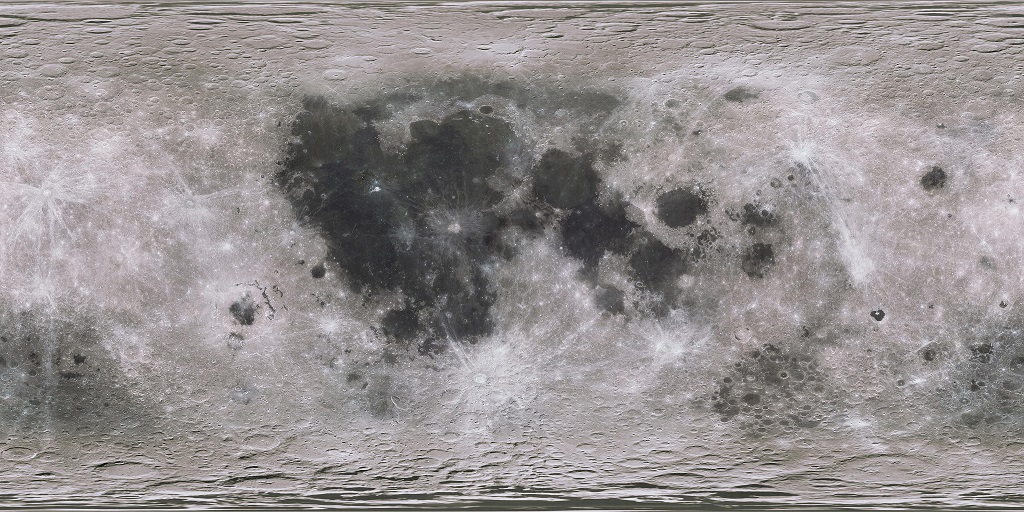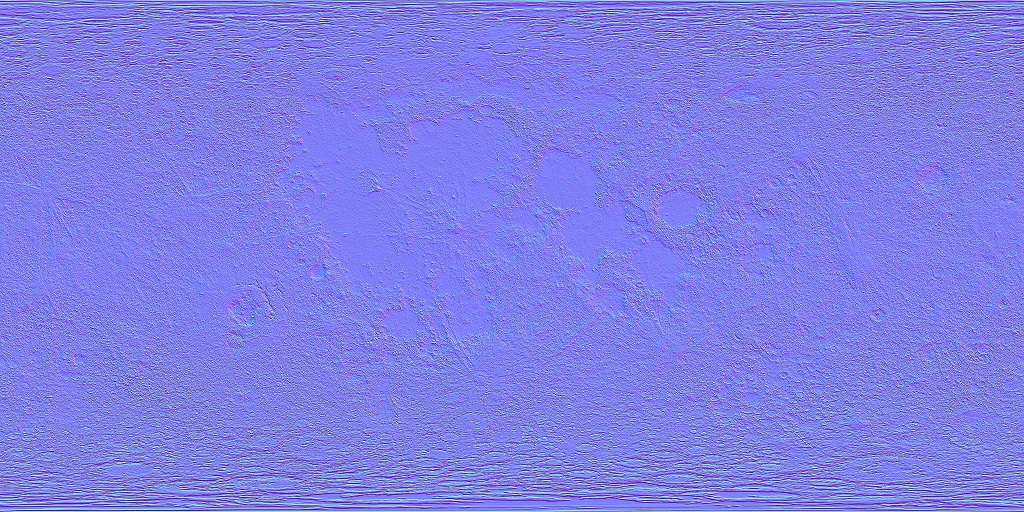Moon Demo
A photorealistic 3D graphics demo of our Moon written in JavaScript and WebGL featuring real high-resolution satellite maps. Check out the live demo! You'll need a modern browser with WebGL enabled in order to run it. I recommmend Google Chrome.
I recently tested this in Chrome for Android on my Galaxy Note 3 and it ran fine at 60 FPS. The stars were not visible. I think they are just too small.
Dependencies
This demo uses the following open source libraries:
mrdoob/three.js- JavaScript 3D Graphics Library - WebGLsindresorhus/screenfull.js- Cross-browser wrapper for native JS Fullscreen API w/ simpler interface.
Credit
In order to create a photorealistic demo I set out to find the highest quality public domain maps of the Moon available. I found out that there is good data published through the Map a Planet initiative and available on the USGS PDS site. The best data we have for our Moon was actually gathered by the Clementine spacecraft. It is possible to process a greyscale image of the entire surface of our Moon using this data, and as far as I know the best maps of the lunar surface we have today were derived from this data. I was delighted to know that all this great data available from USGS is public domain.
The best map I could find was processed by Jens Meyer and apparently also darkened up by Steve Albers. It and other high quality maps can be found on Steve Albers homepage and available free for personal non-commercial use. I say this map is the best in the sense that it has the highest resolution and detail compared to other maps I could find.
The original resolution of the map found on Steve Albers' homepage is
8192x4096. I am using a version scaled down in both width and height by
50% giving a texture at resolution 4096x2048. I find this size suitable for
my demo.
My scaled down version is shown here:
Technical
This demo is an example of using WebGL with the Three.JS JavaScript library. GLSL shaders are used to create a material which is applied to the moon in order to simulate diffuse light calculated for each vertex on the Moon mesh. This allows the effect of the Moon changing phases.
I also generated 6 randomized star patterns in order to create the skybox around the scene, as well as generating a tangent space normal map from the original high resolution map. I generated normal maps at both the original size and the scaled verison.
The scaled normal map is shown here:
If you wish to learn more about how this demo was created, please check out my blog post for a more detailed technical explanation.


